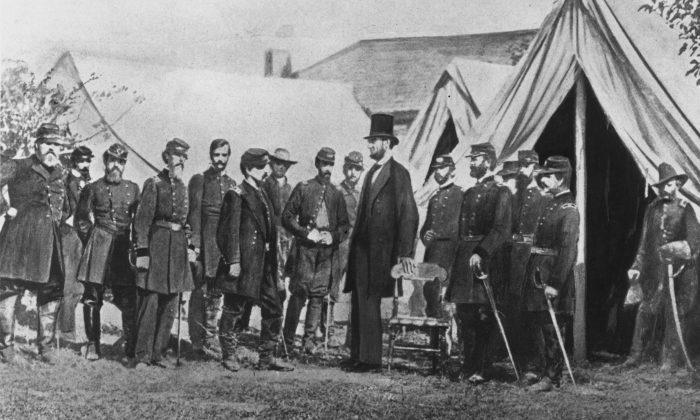The U.S. Civil War not only shaped the nation, it changed the very structure of the American government. After that war, the country passed three enormously important amendments to the Constitution.
The 13th amendment ended slavery in the United States. The 14th amendment said that states had to provide due process and equal protection of the laws to each citizen. The 15th amendment granted former slaves the right to vote. Full realization of these rights has taken much longer, but their very expression was a huge development in the laws of the nation.
While these “Civil War amendments” were necessary, they significantly expanded federal authority over the states. Prior to these amendments, limitations on governmental power were found only in the Bill of Rights (the first 10 amendments to the U.S. Constitution), and they applied only to the federal government. Those rights, of course, hadn’t protected all Americans. State laws often discriminated; they allowed slavery to exist.
The new 14th amendment said that all citizens, including former slaves, had the same rights as all other Americans. It prohibited any state from making or enforcing laws that denied an individual’s civil rights. The Civil War amendments were good and necessary, but they increased the size of the federal government.
The two World Wars of the 20th Century also led to dramatic growth in the federal government. The First World War and the Roaring 20s were followed by the Great Depression. President Franklin D. Roosevelt sought to counter that with his “New Deal.” The programs he proposed went beyond the limited authority of the federal government, and the Supreme Court ruled many of them unconstitutional, including the National Industrial Recovery Act, the Railroad Retirement Act, and the Agricultural Adjustment Act.
Rather than accept those rulings. FDR proposed new legislation that would have altered the makeup of the Supreme Court. The Judiciary Reorganization Bill of 1937 provided for broad reform of the federal judicial system, allowing Roosevelt to appoint an additional member to the Supreme Court for every sitting justice over the age of 70, which would have resulted in a total of six new justices at the time the bill was introduced. The Constitution doesn’t limit the size of the Supreme Court. So, FDR’s court-packing plan was a real threat.
The bill itself was never enacted, but the court blinked. FDR’s New Deal legislation was thereafter usually upheld. Moreover, by remaining in office as long as he did (elected to four terms), he eventually appointed eight justices to the Supreme Court, and they reshaped American law. Soon, virtually any government action in relation to the economy could be taken, so long as it was supported by a political majority.
With the new court and a new outlook, FDR set forth a rethinking of American Constitutional rights. In the 1941 State of the Union address, he proposed four fundamental freedoms that people “everywhere in the world” ought to enjoy: freedom of speech, freedom of worship, freedom from want, and freedom from fear.
The paintings, the magazine, and the president encouraged Americans to change the way they thought about the United States government. They caused citizens to be less afraid of a strong central government and more willing to look upon it as a good thing.
The rise of the United States as one of the world’s two major military powers during and after World War II fueled more growth of the federal government. The expansion of urban and suburban areas in the postwar period made expanded public services more feasible. Greater educational expectations led to significant government investment in schools and colleges. More and more, people turned to the federal government for important programs.
In 1944, FDR called for a “Second Bill of Rights” that would assure American workers of a “right to a useful and remunerative job in the industries or shops or farms or mines of our nation,” and give businessmen the right to be free from “unfair competition and domination by monopolies.” He announced this new bill of rights during his State of the Union message in January 1944.
“Our Economic Bill of Rights, like the sacred Bill of Rights of our Constitution itself—must be applied to all citizens,” he said. Along with the earlier mentioned rights, he included: “the right of every family to a decent home;” “the right to a good education;” and “the right to adequate medical care and the opportunity to achieve and enjoy good health.”
These new rights, unlike those in the original Bill of Rights, were not natural or God-given rights. Neither nature nor God endows people with “a good education,” “adequate medical care,” or “a decent home.” The government was the source of Roosevelt’s rights. If Americans truly had a right to “a remunerative job,” then government would have to see that it was provided. The same would be true of the right to “a decent home.” Presumably other Americans would have the responsibility to pay for those homes. To provide these new rights, government would have to tax and redistribute wealth on a massive scale. It would have to grow.
Roosevelt’s Bill of Rights did not come to pass, but minimum wage and unfair-competition laws accomplished much of what he wanted. The so-called GI Bill of Rights of 1944 gave veterans access to low-cost mortgages and cash payments for educational expenses. Those programs significantly reshaped the way Americans came to see higher education and the role of government. They allowed the federal government to grow even larger.
The original Bill of Rights promised liberty and freedom from government interference, not governmental growth. Even the necessities of war don’t justify governmental growth that interferes with liberty.
To those who would sacrifice their rights and their sovereignty due to modern threats such as terrorism or international aggression, William Pitt said: “Necessity is the plea for every infringement of human freedom. It is the argument of tyrants; it is the creed of slaves.” That is why the Bill of Rights exists.






Friends Read Free